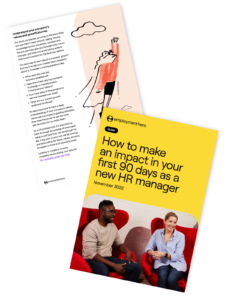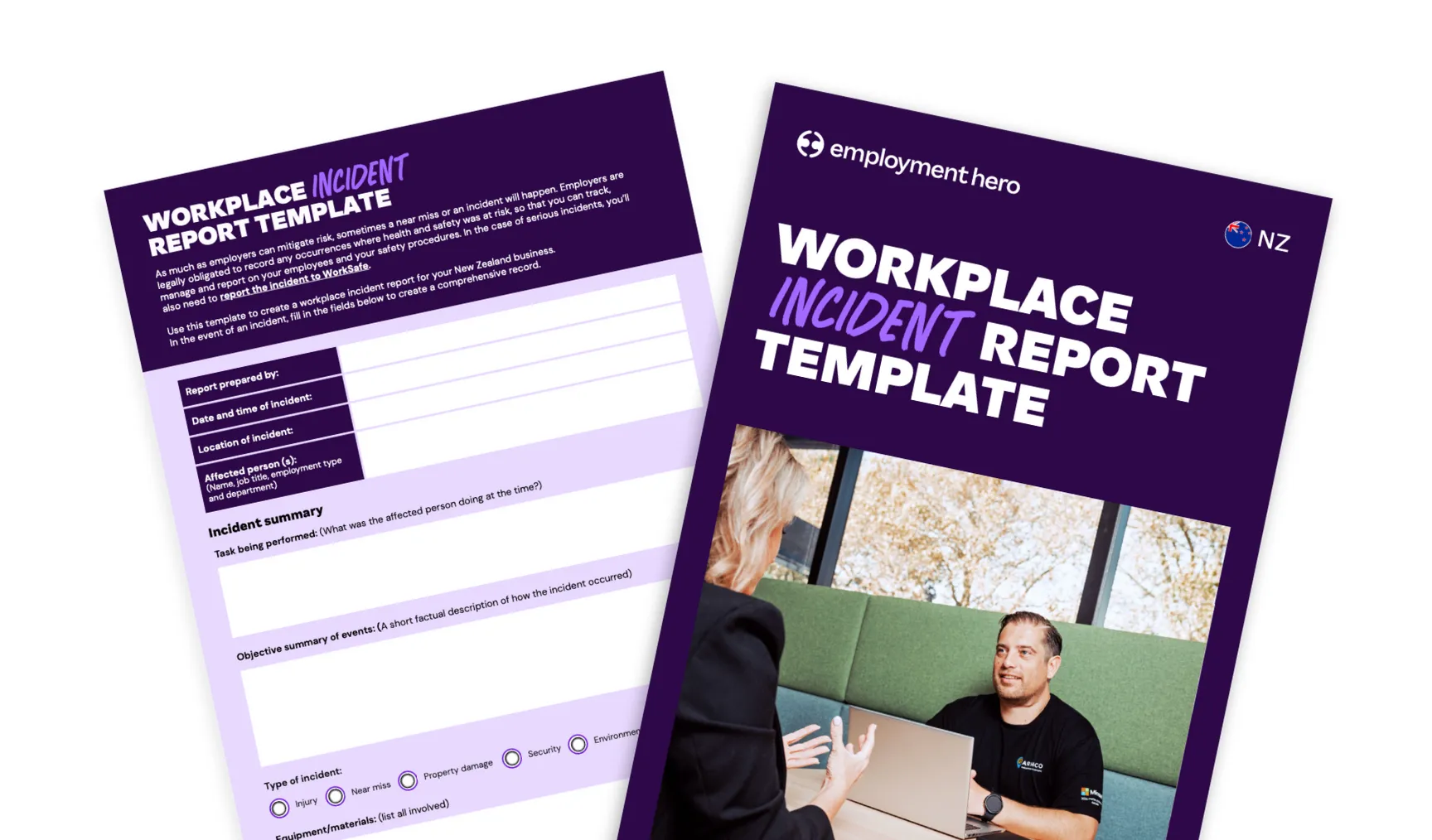Christmas casual HR checklist: Onboarding new hires
Published
Christmas casual HR checklist: Onboarding new hires
1 min read
Onboarding full-time or permanent staff is a very different story to onboarding casual staff. With full-timers, you’ll likely be able to take the onboarding process quite slowly. They could reasonably spend over a week doing a handover with another staff member, undertaking training and just generally getting their bearings in a new role.
For casual staff members, you’ll be bypassing a lot of those formalities and working at a much faster pace. However, onboarding should still be an easy, effortless experience.
Our checklist gives you a list of simple and achievable tasks that you can complete to give your new employee the best possible start at your company. These tasks range from ones that can be completed before their first day, to follow up activities that you can complete after their first week in the role.
Download the checklist by filling out the form.
Why do companies hire Christmas casuals?
Most companies will find that they have peak periods where they’re busier than normal. In sectors such as retail, hospitality and tourism, the summer holiday period is often their peak and the need for additional employees can become pressing very, very quickly. That’s not even factoring in the possibility of additional employees on leave for the Christmas period, New Year and other seasonal holidays. Any employee on leave needs cover, and that can quickly cause issues if operations are already pretty hectic.
Casual employees can be a great solution to this issue. You can bring in staff to cover those gaps and have extra hands over the busy period.
Hiring seasonal and casual employees is also a good opportunity to create a talent pipeline of potential full-time employees further down the line, should you lose existing employees or experience business growth. With tried and tested casual employees waiting in the wings, you can be confident if they come on board as permanent members of the team.
Do you need a different employment agreement when hiring casual employees?
Yes, in that the employment agreement has to specify the casual working arrangement. You should refer to the general definition of casual employment as well. This isn’t a legal definition but legal cases suggests the following defines a casual relationship:
- There is no guarantee of work on a specific day.
- There is no pattern of work.
- The amount of work will fluctuate.
- Each time the employee accepts an offer of work it’s considered a new period of employment. The terms of the agreement are to apply to each new period.
- The employer will let the employee know when there is work available.
- The employee doesn’t have to make themselves available for work.
 What New Zealand law should employers keep in mind when hiring Christmas casuals?
What New Zealand law should employers keep in mind when hiring Christmas casuals?
Casual employees have largely the same rights and responsibilities as permanent employees with a few exceptions.
Dismissal
Every time a casual employee accepts an offer of work, it is considered a new period of employment. If the employer stops offering work, this doesn’t count as a dismissal. The only exception is if the employer sends the employee home in the middle of a shift or reneges on an agreed shift.
Leave
Casual employees don’t have set hours so it may be not practical for them to take annual holidays. The employee and employer can agree that an extra 8% will be paid on top of their wages or salary instead of taking annual holidays.
Casual employees are also entitled to sick leave and bereavement leave after six months of starting work if during that time they have worked an average of at least 10 hours a week, and at least one hour a week or 40 hours a month.
 How can employers retain high-performing seasonal hires for future holiday seasons?
How can employers retain high-performing seasonal hires for future holiday seasons?
So much of the likelihood of casual employees returning for future peak seasons depends on the experience that you, as the employer, gives them. Are you prioritising employee experience in your company? If you’re not yet, now is as good a time as any to start.
The employee experience refers to the entire experience throughout the employee lifecycle, right from the initial attraction stage as a candidate, all the way through to offboarding. Areas including the hiring process, onboarding, training and development, career growth, employee benefits, culture, and more, are just some of the factors that help shape an employee’s perception of your business.
For a casual employee, that entire lifecycle is fast-tracked. Their recruitment and onboarding experience should be smooth, their time to settle in should be short and the culture should be welcoming. When their employment ends for the season, they should come away with a great impression of the company too. How you say goodbye can be as important as how you welcome an employee, after all.
For more information about creating a fantastic employee experience, download our complete guide here.
Manage new employees from onboarding to payroll
First impressions count. Employment Hero completely digitises the onboarding experience, so your new employee can spend their first day getting stuck into their role without a pile of HR documents to sign.
In just a few clicks, a new employee can complete their own employee files electronically with Employment Hero before they even walk through the door. Our handy digital checklists will also ensure that you don’t miss a single onboarding task, from critical payroll details to visa checks.
Keen to find out more? Book a demo with our specialists today!
Disclaimer: The information in this article is relevant as at 6 November 2023, and has been prepared by Employment Hero Pty Ltd ABN (11 160 047 709) (Employment Hero). The views expressed herein are general information only and are provided in good faith to assist employers and their employees. The Information is based on data supplied by third parties. While such data is believed to be accurate, it has not been independently verified and no warranties are given that it is complete, accurate, up to date or fit for the purpose for which it is required. Employment Hero does not accept responsibility for any inaccuracy in such data and is not liable for any loss or damages arising either directly or indirectly as a result of reliance on, use of or inability to use any information provided in this article.
Register for the checklist
Related Resources
-
 Read more: Making an impact in your first 90 days as a new HR manager
Read more: Making an impact in your first 90 days as a new HR managerMaking an impact in your first 90 days as a new HR manager
With the right preparation, you can make a great impact in your first 90 days as an HR manager.
-
 Read more: Incident report template NZ: free download for businesses
Read more: Incident report template NZ: free download for businessesIncident report template NZ: free download for businesses
Download our free NZ incident report template. Record and report workplace incidents correctly under HSWA and ACC requirements.
-
 Read more: Serious misconduct in New Zealand: What employers must know
Read more: Serious misconduct in New Zealand: What employers must knowSerious misconduct in New Zealand: What employers must know
Learn what serious misconduct means under NZ law, common examples, and how to manage the process legally and fairly. Protect…





















